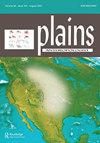Investigations at Goodson Shelter, Oklahoma
Q2 Social Sciences
引用次数: 0
Abstract
Goodson Shelter is a small sandstone rockshelter site located in Craig County, Oklahoma, situated alongside a minor tributary stream. Excavations at Goodson Shelter yielded over 2 m of largely intact deposits, which, based on radiocarbon and optically stimulated luminescence dating, along with a substantial record of temporally diagnostic projectile points, indicate the site was periodically occupied from the Archaic through the Woodland period. An extensive record of faunal remains suggests that over the course of the site’s occupations it was used primarily as a deer hunting and field processing locale. That this site was repeatedly used for such a specialized activity is likely due to the topography in the vicinity the shelter, which made it an opportune spot for intercept hunting, and thus one that played a long-term role in settlement and subsistence strategies.俄克拉何马州古德森避难所的调查
古德森避难所是位于俄克拉荷马州克雷格县的一个小型砂岩岩石避难所,位于一条小支流旁。古德森避难所的挖掘成果超过2 m的基本完整的矿床,根据放射性碳和光学激发发光测年,以及时间诊断射弹点的大量记录,表明该遗址从古代到林地时期都被周期性地占领。对动物遗骸的广泛记录表明,在该遗址的占领过程中,它主要被用作猎鹿和野外加工场所。该地点被反复用于此类专门活动,可能是由于避难所附近的地形,使其成为拦截狩猎的合适地点,因此在定居和生存战略中发挥了长期作用。
本文章由计算机程序翻译,如有差异,请以英文原文为准。
求助全文
约1分钟内获得全文
求助全文

 求助内容:
求助内容: 应助结果提醒方式:
应助结果提醒方式:


